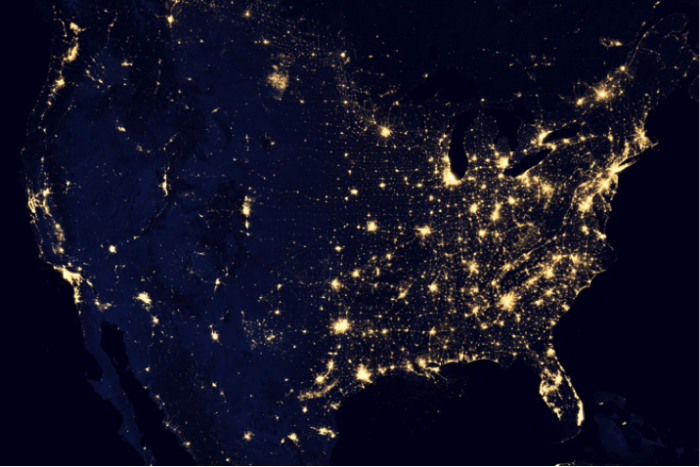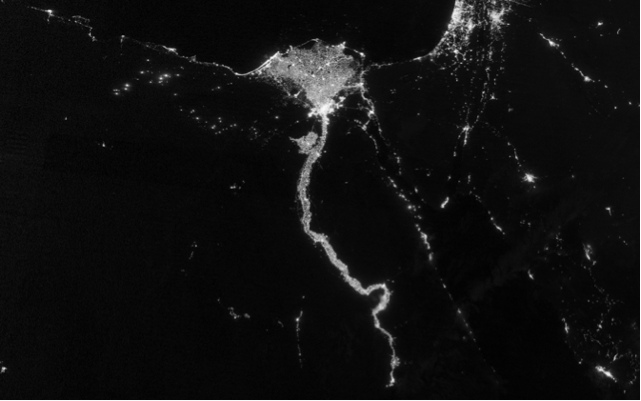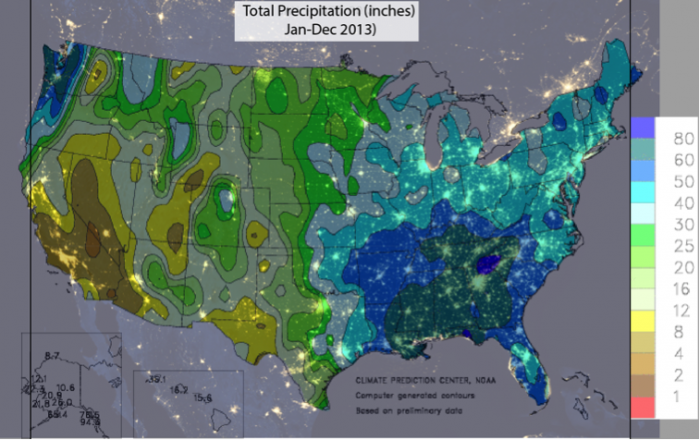Water and Population Centers
Some cities are sited in areas where water is available - or was at the time they were settled - including Las Vegas, Los Angeles, Chicago, St. Louis, and Pittsburgh (Figure 4). In some cases, and as we will discuss in detail in later modules in the course, rapid development and growing demand can outpace the original and limited water source for a city or region, leading to a vicious cycle of water acquisition, growth enabled by water availability, and subsequent water stress.

Many of America’s major manufacturing centers (i.e. the rust belt) are located in areas where major rivers and canals provided a means for transport of raw materials and goods, power generation, water supply for processing and cooling, and conveyance of waste. At small scale, harnessing hydropower was accomplished by mills; at larger scales in modern dams, it is through hydroelectric power generation. Major rivers also provide the water supply for irrigation-based agriculture in some areas, where precipitation is not sufficient or consistent enough to support crops.

Indeed, for these reasons, rivers in many parts of the world are considered the “lifeblood” of society (Figure 6). For example, the Nile River valley in Egypt comprises ~5% of the land area, yet is home to nearly the entire population of 78 million, with a population density among the highest in the world (more than 1000 people per square km). Despite the obvious connection between water availability and human needs, the story of water resource distribution and population growth is not that simple! In some cases, major engineering projects in which millions of acre-feet of water are moved across states or continents have allowed cities and irrigated agricultural regions to flourish in water-scarce parts of the world. In others, major dams or new water sources (i.e. deep groundwater, reclaimed water, or desalination) have provided a means for cities to prosper in unlikely places. For example, take another look at Figure 4 above. The concentration of nighttime lights provides a reasonable proxy for population density. In many parts of the U.S., they follow the water: along the St. Lawrence, girdling the Great Lakes, and along the Mississippi River. Yet other major population centers have sprung up in perennially dry regions, mainly in the deserts of the southwest: Los Angeles, Las Vegas, Tucson, and Albuquerque.
Learning Checkpoints
1. Inspect Figures 4 and 5 and compare the two maps. Note 3 major cities that are near large water sources (rivers or lakes). View Figures 4 and 5above.
2. List 3 cities or regions of high population density that are not near major water sources, and/or lie in areas of low precipitation.
3. Do you know anyone who lives in one of these dry areas, or have you thought about moving there?

